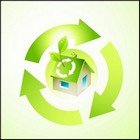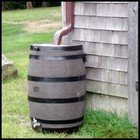28 Ways to Save Water in your Bathroom, Laundry and Kitchen
Where do you use your water? In a typical household 35–55 % of water is used outdoors, 30–37 % in the bathroom, 10–13 % in the laundry, 9–13 % in the kitchen and 1–10 % is due to leakage. Up to 16 % of household water is flushed down the toilet. That's a lot of water!
Therefore, in order to start saving water in your home you should first see where the leakages are and then look at trying to change some old habits that are causing you costs.
Ways to save Water in your Bathroom and be Water Wise
Ways to save Water when using your Toilet and be Water Wise
- Unnecessary flushing is one of the biggest wasters of water. Don’t flush needlessly, and never flush items other than waste and toilet paper down the toilet.
- Use the half-flush option on dual-flush toilets.
- Replace your older-style toilet with a 4-star dual-flush system. This can save you up to 8 liters of water with every flush.
- If this is not practical, try reducing the volume of water you use with each flush. You can do this by installing a flow restrictor or by putting a bottle filled with water in the cistern.
- Use tank water to flush. Talk to your plumber about having your rainwater tank internally plumbed to your toilet.
Ways to save Water and be Waterwise with Showers
A standard shower can use 20 litres of water per minute. For saving water using a shower, try the following:- Install a water-efficient shower head. A 3-star rated shower head will use no more than 9 litres of water per minute.
- Take a shorter shower.
Shorter showers will not only save water but will help to save on the
energy associated with heating the water.
- Insulate your hot
water pipes. This means you will not need to wait as long for the hot
water to flow through—saving you both water and energy.
- Make sure
your hot water system thermostat is not set too high. Adding cold water
to reduce the temperature of very hot water wastes both water and
energy.
- Use a bucket to catch water while the shower warms up. You can then reuse this water on your garden.
Ways to save Water and be Waterwise with Basins
For saving water using baths and basins:- Use a plug
when washing your hands and face.
- Turn off the tap while cleaning your teeth or shaving.
- Use as little water as
possible in the bath. Put the plug in before you turn on the tap and fi
ll the bath to less than a third. You may also like to bath small
children together.
Ways to save Water with your Laundry and be Waterwise
The laundry is a place where you not only use a lot of water but you also use energy and detergents.- The best way to save water in the laundry is to make sure that you select the right washing machine. Select one that has a water rating of 4 stars or more. This will usually mean a front-loading washing machine. On average, front-loading washing machines use up to 50 per cent less water, 35 per cent less detergent and 30 per cent less energy than top loaders.
Here are some other changes you can make to your laundry habits and more ways to save water and be waterwise:
- If you stop using your washing machine every day, you can sort and wash bigger loads more efficiently.
- Pre-treat stains before you wash. This will reduce the
chances of having to rewash.
- Make sure that everyone picks up and sorts the clothes they
wear each day. That way, clean clothes won’t get washed just because
they are left lying on the floor.
- If you are washing clothes by hand, use only as much water
as you
need in the sink or bucket. Reuse this water in your garden.
- Divert greywater from your washing machine for immediate use on your garden, but don’t use it on your vegetables. Also consider using biodegradable, low-phosphorous, low-sodium and low-nitrogen detergents, which are better for the garden.
Ways to save Water in your Kitchen
For Saving water in the Kitchen:
- Only use the dishwasher when you have a full load.
- Scrape your plates clean instead of pre-rinsing your dishes under the tap. Non-water efficient dishwashers can use up to 25 litres of water a cycle. If you have this type of dishwasher, you will save more water if you wash your dishes by hand. If you hand-wash your dishes, don’t rinse them under running water. A running kitchen tap can use up to 15 litres of water a minute.
- If you have two sinks, half-fill the second with rinsing water. If you only have one sink, rinse the washed dishes in a pan of hot water.
- Don’t use running water to wash your vegetables or to defrost food. Instead, wash your vegetables in a bowl and place your frozen food in the fridge to thaw overnight.
- Scrape your dishes and soak your pots and pans to remove food rather than rinsing them under running water.
- Garbage disposal units can use up to 6 litres of water a day and also put extra rubbish into the sewage. Rather than putting your food scraps down the drain, put them into a compost heap or start a worm farm.
- Encourage your children to empty their water bottles onto
your garden or pot plants instead of down the sink.
Ways to save Water by Checking for Leaks and be Waterwise
A lot of water around the home can be lost because of leaking pipes and dripping taps. Just one slowly dripping tap can waste 9000 litres of water a year, while a visibly leaking toilet can waste more than 60 000 litres.- Make sure that you turn all your taps off properly, check
for leaks,
repair leaking taps, and check washers for wear and tear.
- You can check if your toilet is leaking by putting a little food colouring in the tank. If the food colouring appears in the bowl without flushing, have the cistern repaired immediately.
Check your water meter and make a note of the reading. Recheck the meter after at least one hour. If the reading has changed, you may have a leak. This needs to be found and fixed.
Source: Department of Environment and Resouce Management
Waterwise Queensland
You can Add your Own Comments and Pages!
We have lots of pages where you can contribute to throughout this homesteading website. We love hearing from our readers, and hope you will be one of those we hear from too. Look around our homesteading website. If you have any comments or questions, please feel free to contact us.
Leave a Comment
Do you have anything that you would like to add after reading this page? We would love to hear your thoughts. If you can add additional information to what has been written here you will be adding value to the website! No need to have any special skills - just type and submit. We will do the rest!
Other Comments
Click below to see comments from other visitors to this page...
dam wise 




If you are building a house why not shell out a few extra hundred and install a dam? These can save you water for your gardens and save up to 23% of water …






New! Comments
Do you have something of value to add? Leave me a comment in the box below.